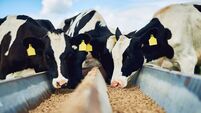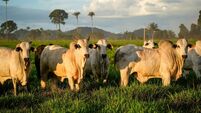Significant changes ahead for traditional beef markets
However, the partial closure of the country’s EU market may slow its progress, unless it can continue to build on this year’s expected sales growth to new markets such as Russia , Cuba, Malaysia and China.
Meanwhile, beef from the US could start to appear more frequently in 2008, replacing Brazilian imports. US exporters are finding it difficult to reestablish in their traditional Asian markets.
The US Meat Export Federation says it does not compete directly with Brazilian beef, operating instead at higher quality and price levels, but a shortage of hindquarter cuts in the EU due to the imminent restriction of Brazilian beef imports would increase the demand for US beef in Europe. The weakest dollar in US history also makes its beef more attractive to importers.
The US is a big net importer of beef, but its production is expected to grow faster than consumption, and exports could expand from 500,000 tonnes in 2006 to 1.5 million tonnes by 2016 — unless higher feed prices make expansion uneconomical.
In contrast, Australia’s drought-stricken production is likely to decrease, and this will lead to shrinking exports. New Zealand’s beef exports are also likely to stagnate.
Argentina is unlikely to match its exceptional high level of exports in 2005, after which export taxes were raised and partial export bans introduced, to keep price inflation under control in the country, which has the world’s highest beef consumption.
Canada has some scope to grow beef production, but traditionally concentrates on the US market.
Over the next few years, China is expected to come close to the US or Brazil in beef production. But with a huge home population to feed, it may become a major beef importing country.
Russia is predicted to remain a net beef importer while India will see growth in beef production, but is likely to match it with increasing consumption.
Everything points to a strong global beef market, just as the EU pulls down the shutters on Brazilian beef. It was only a few years ago that the EU switched from being an important beef exporter to become a net importer.
Now, it seems set irreversibly on decreasing beef production, due to dwindling dairy cattle numbers (unless the milk quota system is dismantled quickly), and the decoupling of payments which has reduced incentives for suckler cow herds.
Most of the beef exporters into the EU will have to pay the full EU border tariff which clicks in over the 200,000 tonne level.
Growing beef exports are also needed to feed Asia.












